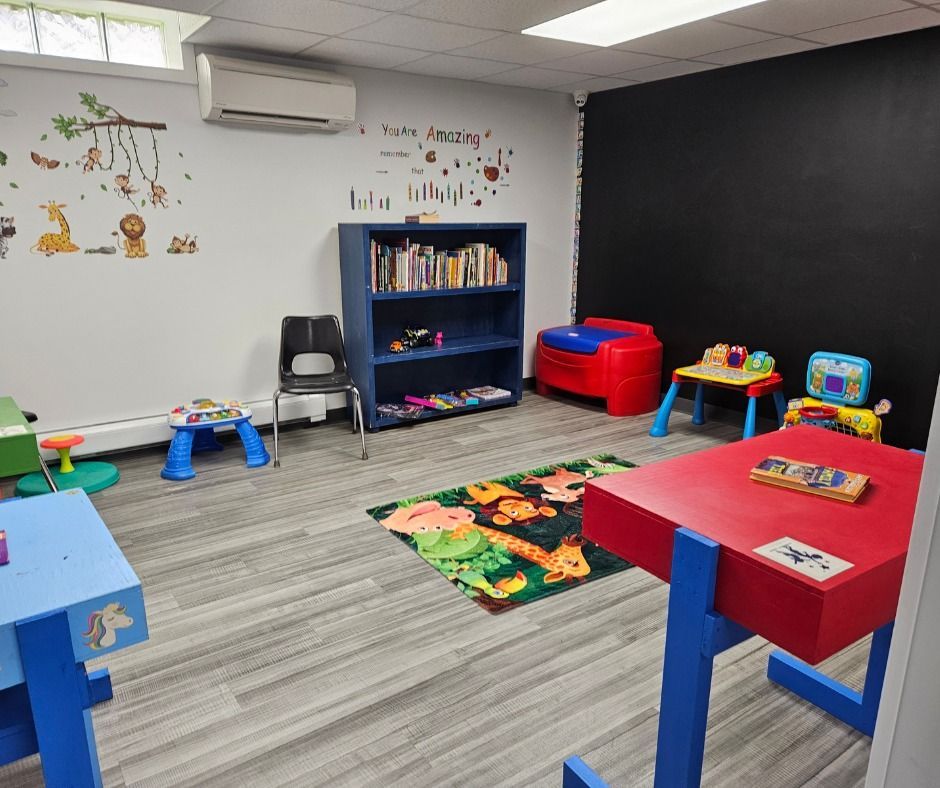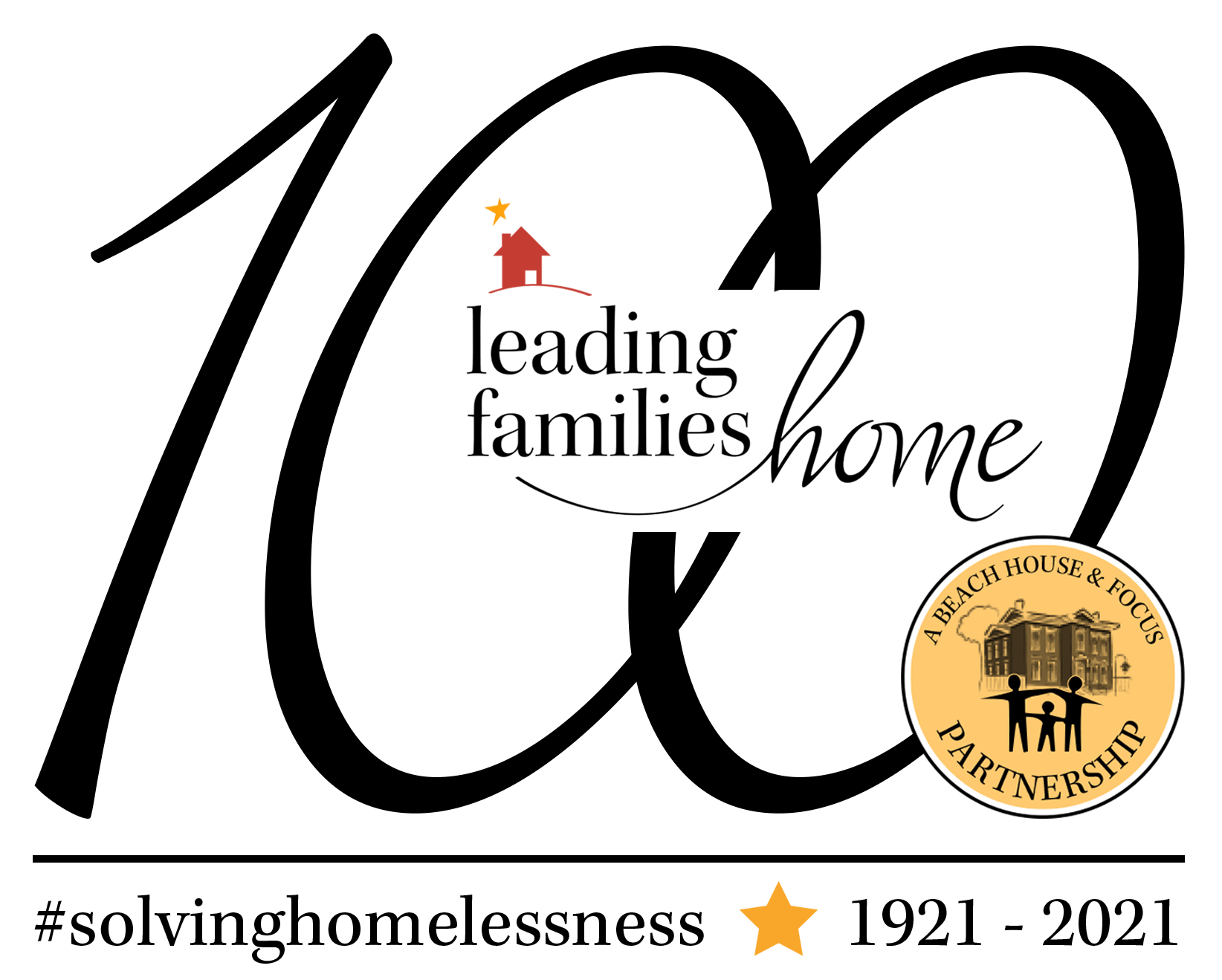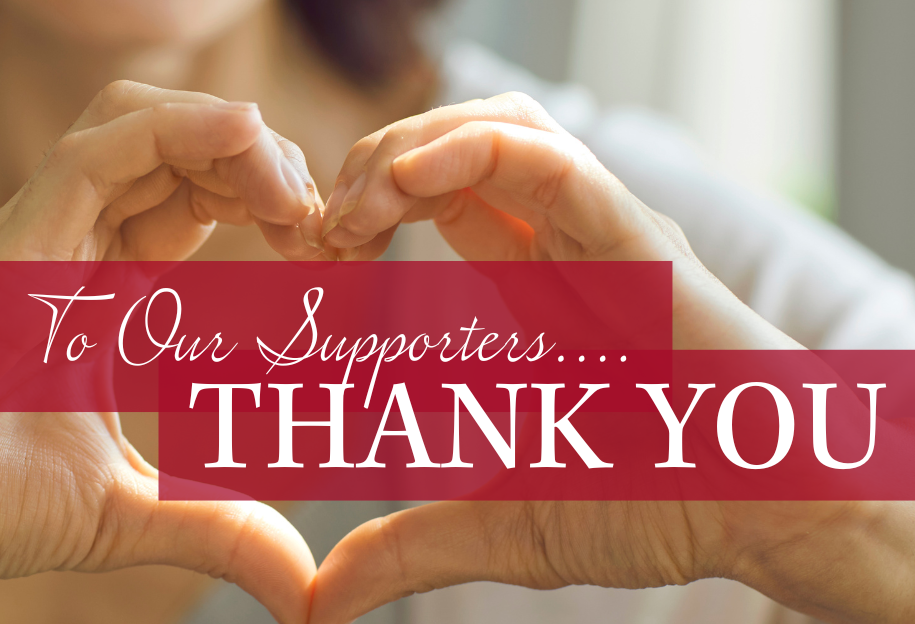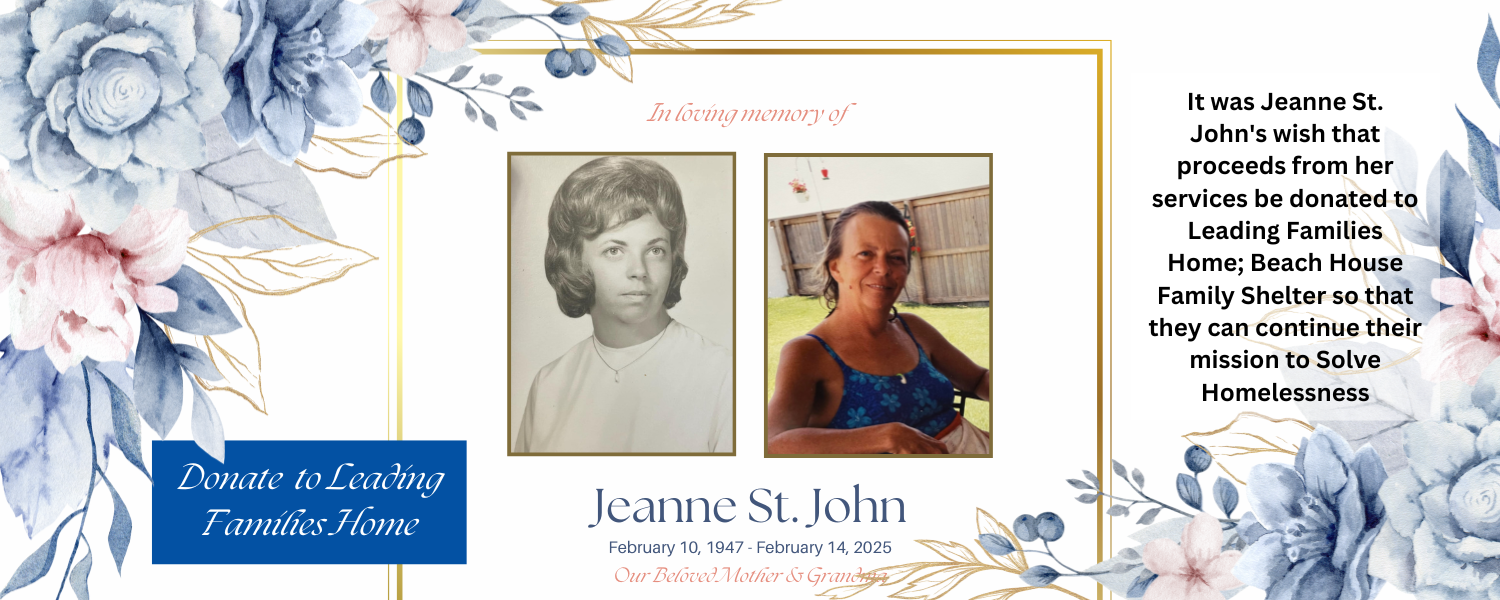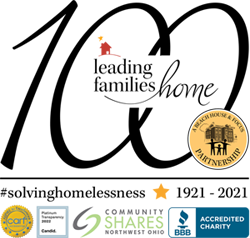The Road to Homelessness
People don’t just wake up homeless – the road to homelessness has many stops along the way. No matter what you’ve heard, homeless people do not want to be homeless. Homeless people are not lazy or don’t want to work. Instead, they struggle to keep a roof over their heads and secure shelter for their families. They seek employment. They don’t all spend their money on alcohol and drugs.
Becoming homeless isn’t always a short trip; sometimes it takes months or years for a family or individual to find themselves without a home.
The Housing Wage Gap
For many people, low wages and the cost of housing is where the road to homelessness begins.
Average wages aren’t enough to cover housing costs throughout the US for a significant amount of people. Ohio is no different. There is a gap between what people are paid and what rental units costs – a gap that is insurmountable for many.
The National Low Income Housing Coalition released the 30th edition of its report Out of Reach in 2019. This report documents the gap between renters’ wages and renting housing costs throughout the US.
This report shows that it is not feasible for a renter who makes minimum wage to afford a rental unit virtually anywhere in the US.
A full-time worker with a standard 40-hour work week earning the federal or prevailing state minimum wage cannot afford a two-bedroom rental home at fair market rent in any U.S. county and can afford a one-bedroom rental in fewer than 99% of counties (28 out of more than 3,000 counties) nationwide. On average, a worker earning the federal minimum wage of $7.25 an hour must work 127 hours every week (3 full-time jobs) to afford a modest two-bedroom rental home ($1,194/month) or 103 hours every week (2.5 full-time jobs) to afford a one-bedroom rental home ($970/month).
A hypothetical family living in Ohio may find itself in the following situation: two adults with two children, seeking a safe, two-bedroom rental unit. The mother of the family is a Home Health Care Aide and makes $12.71 an hour. Her husband is a Retail Salesperson who makes $14.12 an hour. They rent a two bedroom home in Toledo, Ohio, for $832 a month. (Wages were determined using May 2019 State Occupational Employment and Wage Estimates
Ohio from the US Bureau of Labor Statistics. Rent was determined through NLIHC’s Out of Reach report for Ohio 2020 .)
The wife earns about $2,000 each month, before taxes. Her take home pay equals $1,660 per month. The husband earns about $2,600 and takes home about $2,000. With their combined salary, their rent is about 23% of their income. (These figures were calculated using SmartAsset’s Federal Paycheck Calculator .)
This is an acceptable situation. The family is not cost burdened, which means they pay less than 30% of their income for rent and utilities ( according to HUD’s definition ). As long as both adults are able to work 40 hours a week and the couple stays together, the family should be able to afford rent.
Domestic Violence
Consider another step on the road to homelessness: The wife and children experience domestic violence at the hands of their husband and father. After suffering in this situation for years, the wife leaves with her children. She finds an apartment for the same price, $832 per month, but with only one income, her rent and utilities consume 50% of her income. Her single-parent family is severely cost burdened.
If she downsizes and moves her family into a one-bedroom apartment, her rent is now 39% of her income, which means she is still considered “cost burdened” – paying over 30% of her income in rent. The living conditions are poor; she sleeps on the couch and her children share the only bedroom in the apartment. Crime rates are higher compared to other neighborhoods in the area.
If she is unable to work 40 hours a week, she will not be able to afford rent for herself and her children. She will have to find another home to live in.
Incarceration, Illness, Loss
Like domestic violence, other circumstances that may bring a family closer to homelessness include the incarceration, illness, or loss of one parent. Again, this creates a one-income family that is no longer able to afford housing.
Doubling Up
The hypothetical family may move into their elderly grandmother’s home for a time, a living situation called doubling up – “living in crowded dwellings with extended family members or friends because of economic hardship.” ( Social Justice News Nexus ) Doubling up puts this family at an increased risk of homelessness, according to HUD’s Risk of Homelessness definition .
Living in this type of situation not only puts the family at a greater risk of homelessness, it also creates a dangerous situation for children. If the apartment that the family moves into has only one bedroom, where will the family sleep? Imagine the children sharing their grandmother’s bed while the grandmother sleeps on the couch and the mother sleeps on the floor. This creates a crowded living situation where the children may become sleep deprived. Food may be scarce. The mother may not be able to afford to wash her children’s clothing as regularly as she’d like, leading to inadequate personal hygiene and dirty clothes.
This living situation may continue for several months or more, until the woman’s elderly mother cannot afford to shelter her daughter and grandchildren. The family must move again.
Vehicular Homelessness
At this point, the family of three may move into their van and live in it, something called vehicular homelessness . The family no longer has a home, but they still have a vehicle, and this becomes their home.
They sleep in parking lots of churches, grocery stores, and car dealerships. The mother constantly worries about getting fined for sleeping in the vehicle. They worry about automobile accidents or break-ins that could destroy their vehicle and leave them with nothing.
The family washes up at park restrooms or at churches. Their hygiene goes from inadequate to poor. The children get bullied at school for the way they look and smell. The family survives on canned and processed food. Without identifying a subsequent residence and lacking the resources and support networks to obtain permanent housing, the family is at imminent risk of becoming homeless (according to HUD’s Homeless Definition criteria .)
Elderly & Disabled
In comparison to the hypothetical family above, another person at risk of homelessness is one who is elderly – over 62 – and disabled.
After working at a low-income job for thirty years, this individual has aged into his sixties. One day, he crosses the street and is hit by a vehicle. He is in a wheelchair, unable to walk for months and in need of intensive physical therapy. He has little savings, all of which go toward his medical care.
Once out of the hospital, he can no longer work and, therefore, cannot afford housing. Due to his disabilities, he is unable to drive a vehicle. He asks to move in with his adult daughter, but she can barely afford rent, utilities, and food for her family of four, let alone for her senior father.
Without family, resources, income, or support, this man finds himself on the street, sleeping on benches, and begging for food. His compromised immune system makes him highly susceptible to infection and disease, things that could potentially end his life prematurely.
Mental Illness & Incarceration
Yet another individual on the road to homelessness is a mentally ill person. Imagine this person suffers from developmental disabilities and takes medication to battle depression. This person, perhaps a young woman, is estranged from her family due to her disabilities and illness. Although they support her, her struggles with depression lead her to isolate herself from friends and family. She dislikes taking her medication, because it makes her nauseated and groggy.
She isn’t social, and has few friends at her low wage job as a cashier. She makes $11.72 an hour, only a few dollars more than minimum wage. She rents a one-bedroom apartment in a high-crime part of town.
One day, she is arrested for suspected shoplifting at a local store. She doesn’t fully understand the situation, and her social cues are off. The police suspect she is guilty due to her odd responses. After being questioned, the young woman believes that the officers want her to admit to shoplifting, so she does.
Her family helps her avoid incarceration – this time. Unfortunately, this young woman finds herself in additional situations that lead to arrest and is incarcerated.
After serving her sentence, she now has an arrest on her record. Because she was unable to work, she didn’t make the payment on her rental apartment. She was evicted. With a criminal record and an eviction on her rental history, she struggles to find work and housing.
She lives with her family for a short time, until the crowded situation combined with her disabilities and depression lead her to run away. With nowhere to go, she becomes homeless. She stops taking her medication and becomes even more isolated. She has no support or resources, and little hope of finding a way out of homelessness.
Where to Go?
The situations that lead to homelessness can be as simple as not making enough money to afford decent housing or as complex as developmental disabilities paired with incarceration. Those who are disabled, elderly, survivors of domestic violence, and minorities are at a greater risk for experiencing homelessness, as are those who have experienced incarceration and eviction.
The Path to Permanent Housing
Homelessness is not the end of the journey for anyone. Thanks to caring individuals, religious group, and nonprofit organizations like Leading Families Home, those who experience homelessness can transition to permanent housing. In an article we’ll publish next week, we’ll explore the path that can lead families and individuals to permanent housing.
Let’s Connect
Connect with us on social media to see the latest stories from our Participants, Board Members, Staff, and Volunteers!
You can support Leading Families Home by liking or following our accounts, liking and SHARING them on your social media accounts. Invite your contacts to like or follow us, too! Let’s spread the word, and end homelessness in Toledo!
Help Us Out
Leading Families Home is based in Toledo, Ohio. We are dedicated to fighting homelessness in our community – and we’d love your help! Please consider supporting our organization in one of the following ways:
Donate Online
Leading Families Home partners with PayPal for secure online payments. Click Donate Now to be taken to the secure donation page.
Mail a Check
To donate by check, please make the check out to Leading Families Home.
Mail your check to the following address:
Leading Families Home
2283 Ashland Ave.
Toledo, OH 43604
Other Ways to Donate
Shop with AmazonSmile
When you shop on AmazonSmile (smile.amazon.com) the AmazonSmile Foundation will donate 0.5% of the price of eligible purchases to the charitable organization of your choice. Learn more about AmazonSmile .
Use Kroger Community Rewards
It’s easy to donate with Kroger Community Rewards – just shop at Kroger, and swipe your Plus Card! Join Kroger Community Rewards .
Matching Gifts: Double Your Donation
Every year we have a Match Campaign – an exciting way for you to double your impact. During this campaign, our match partners will match your monetary donation to Leading Families Home.
Match partners also include corporate sponsors who match their employees’ donations. If you’d like to participate, find out if your employer matches employee donations to 501(c)(3) organizations and contact us .
Host a 3rd Party Fundraiser
Do you love to plan events? You can raise donations for LFH by hosting your own event! Have fun and make an impact on our community. Ask for donations instead of birthday gifts or baby shower presents.
Remember Us in Your Will
A Planned Gift allows you to donate in a very meaningful way. Contact your financial advisor or estate planner to learn more.
